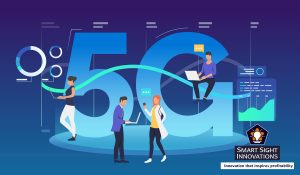 Superfast connectivity, extensive machine-type communications, optimum energy consumption, ultra-low latency periods and increased bandwidth are some of the touted advantages of the 5G network that many countries are expected to launch in 2022. With deep implications in the industrial and many other segments, the rollout of this technology has excited businesses as well as individuals who have got a taste of faster speeds with 4G networks.
Superfast connectivity, extensive machine-type communications, optimum energy consumption, ultra-low latency periods and increased bandwidth are some of the touted advantages of the 5G network that many countries are expected to launch in 2022. With deep implications in the industrial and many other segments, the rollout of this technology has excited businesses as well as individuals who have got a taste of faster speeds with 4G networks.
Many services that were thought of as being futuristic such as e-health, connected devices, municipal traffic systems will soon become a reality with the advent of 5G. We look at some of the most important applications of this eagerly awaited technology.
Developing Societies
The deployment of 5G into many of society’s critical infrastructures will inject state-of-the-art technology that drastically improves the quality of life as compared to previous technological iterations. Smarter electricity grids with lesser wastage will lead to a significantly lesser carbon footprint. A connected network of consumer vehicles that shares critical data within the network to help prevent road accidents and also help with the immediate deployment of emergency services during such unfortunate incidents is a critical application.
A network of connected sensors deployed in areas that are prone to natural disasters such as floods or landslides will work as an early warning system to residents and have the potential to save lives in the thousands.
Another important application is the automatic deployment of drones with cameras to oversee relief operations during times of emergencies that gives relief workers an idea of the primary areas where they can focus their relief efforts.
E-health endeavors receive a big boost with 5G, given the increased bandwidth and lower latency that augments the reach of the 5G network.
Revolutionizing Industries
5G is largely expected to be the bedrock of flexible and scalable businesses that can tune their production capabilities to sync with consumer demand and automatically increase or decrease production. Smart systems can predict machine downtime beforehand and also foresee any issues with logistical routes right up to the final point of delivery to improve supply chain efficiency, while also enabling end-to-end tracking for each item from warehouse to port to identify the first point of concern.
Organizations can also build remote access to robots that are dependent on 5G networks when vehicles – both personal and public transport – are on the move to ensure increased safety for passengers.
One of the significant areas where 5G is expected to bring extensive improvements is in the agricultural sector – with critical applications that help in improving produce, enhancing irrigation systems and improving agricultural machinery performance.
Enhancing Experiences
With its vast bandwidth capabilities, network providers are banking on 5G to bring in a host of new consumers and to provide them with larger-than-life experiences through this platform. Consumer AR and VR tech companies are banking on the promise of improved bandwidth and low latency that 5G is expected to provide to give customers an engaging experience of the metaverse, something that has caught the imagination of millions around the world.
The onset of the pandemic has witnessed considerable work being performed online. The metaverse expands this online sphere by creating virtual worlds that individuals can explore using various avatars. These virtual worlds will be deeply immersive by providing sensory experiences such as touch and smell.
Major events such as sports and entertainment could be streamed on these virtual platforms without any glitches because of the increased bandwidth capacity that can support hundreds of thousands of users at a time.
Many app development companies are banking on 5G to offer the next level of experiences for the billions of smartphone users around the world.











